The spotted hyena is one of the most well-known and popular animals today, thanks to its many appearance in nature documentaries as well as movies. It has become one of those iconic animals that almost everyone knows or at least can identify.
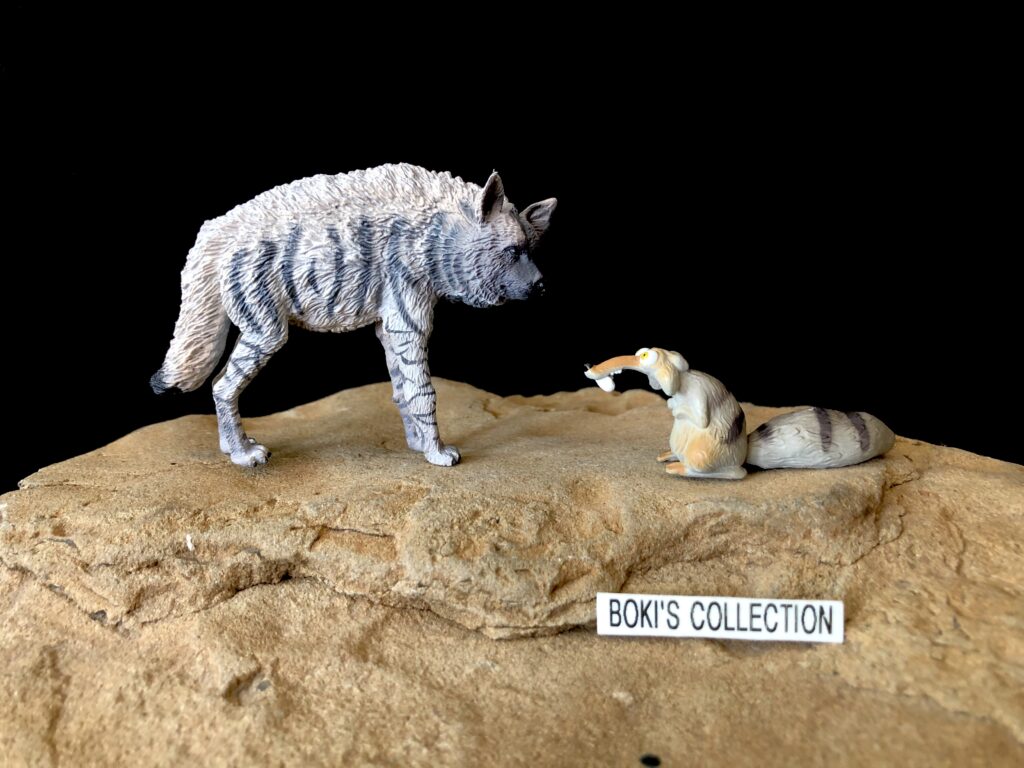
But the spotted hyena is not alone in its family, today there are actually four extant species of hyenas: the spotted hyena (Crocuta crocuta), the brown hyena (Hyaena brunnea) the aardwolf (Proteles cristatus), and striped hyena (Hyaena hyaena). The three other species are obscure ones, rarely seen in films, let along in toy form.

Today, we will take a look at one of them. We have come to expect the obscure from CollectA, and their hyena is no exception. Instead of the popular spotted, they went for one of its obscure relatives, the striped hyena instead, and what a beautiful figure it is.
Striped hyena (Hyaena hyaena) is one of the most widespread of the hyenas and is native to North and East Africa, the Caucasus region, Central Asia, Middle east, and the Indian subcontinent. Its prehistoric range was much wider that it is today and once even included many parts of Europe. While we commonly associate hyenas with Africa, this species range proved that they are adaptable. Today, they are listed by the IUCN as a near-threatened species.
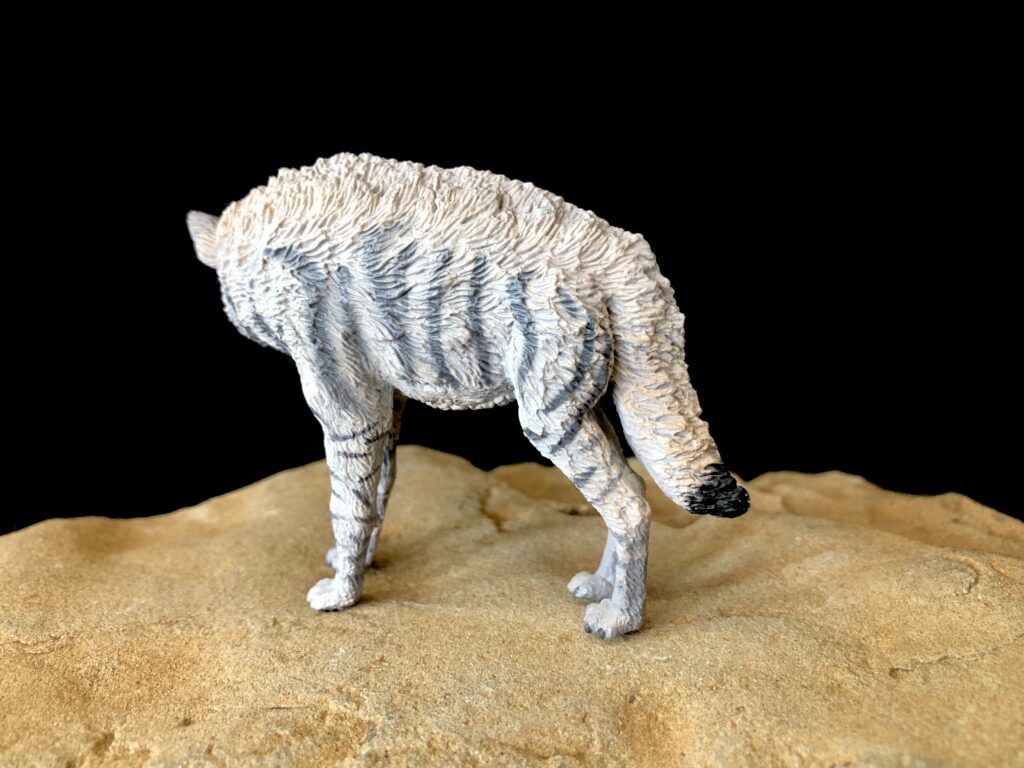
Perhaps the most distinctive feature of the striped hyena is its coat. Unlike the spotted, its coat is longer and shaggier on the back and sides than its cousin. The coat looks almost bristly. The length of the coat changes seasonally, with the longest and fullest coats seen during the winter month. Its coat is also almost white in color and is adorned by multiple black stripes that earned it its common name.

The coat and colors are variable depending on its range, some exhibiting much darker coats, while others much lighter. CollectA captured this unique feature very well. The long hair on the back is sculpted nicely with lots of visible textures and strands. The length of the back hair also can be variable with some animals exhibiting shorter, while others are full. On the figure, this longer coat is colored white with a little bit of light brown/yellow mixed it adding some depth.

The black stripes on the figure start right on the back, just under the longer tuft of coat, and runs down towards the belly. These stripes are mostly long single ones with a few short-broken ones. These stripes on the real animal are variable; some show continuous stripes, while others display a shorter or broken stripe along the sides. There are thin bands of black on the legs as well. The overall look is reminiscent of a zebra.
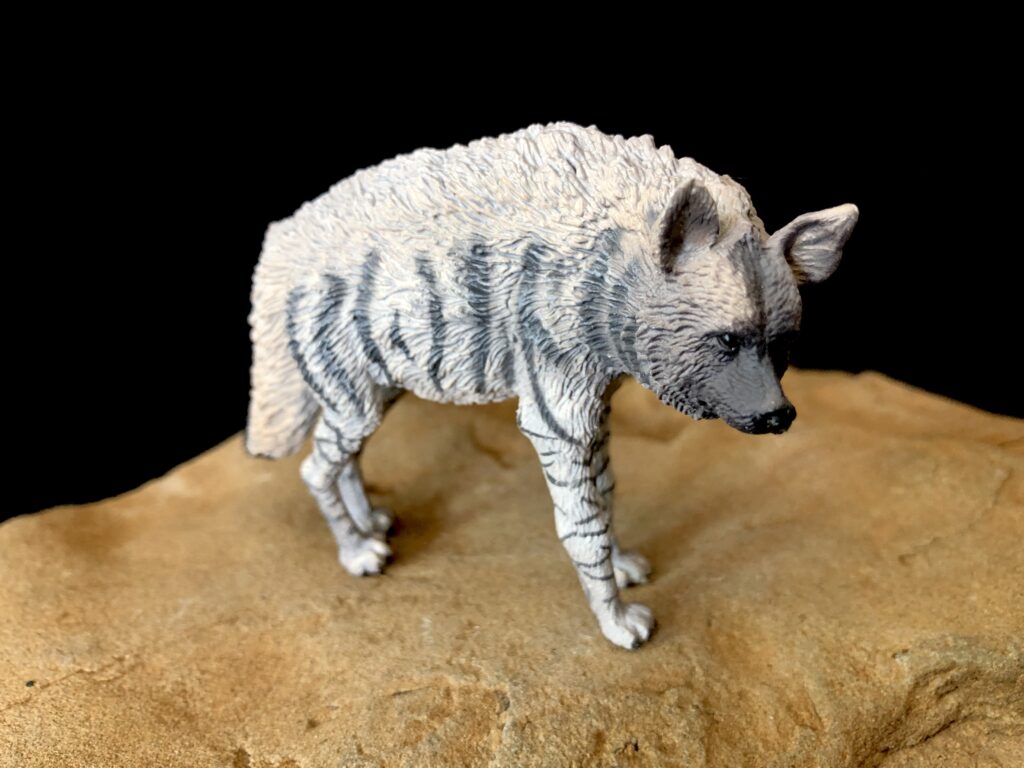
The face is and head is short and muscular as it should be. The face is almost black on the front half. The eyes are small, painted black, and have an almost pensive look to them that fits the animal. The black nose is rounded. The snout is longer and narrower than that of its spotted cousin.

Striped hyena’s have big, pointy ears that are set high on the head. The figure captured the size and shape perfectly. The ears are perked up, and has lots of details; you can even see individual hair strands.The striped hyena shows the typical “sloped” posture; its hind legs are shorter than the front giving the animal a higher front that causes the back to slope downwards

The legs are longer and thinner than that of the more muscular legs of its spotted relative. All of these distinctive features are very well capture in the figure and are very accurate.
When we picture a hyena, it is often the spotted hyena that comes to mind. In reality, as popular picture as this is, the spotted hyena’s physical shape is actually an exception rather than the rule when it comes to how the four extant species compare to each other. The striped, brown, and aardwolf are all fairly similar in shape and fur length, with the aardwolf being the one it closest resembles.

Due to their widespread range, they are unique in sharing the landscape with other predators that you wouldn’t normally associate with hyenas. Tigers, sloth bears, and wolves are just some of the exotic predators that shares the landscape with the striped hyena in some of their range, in addition to the familiar African predators
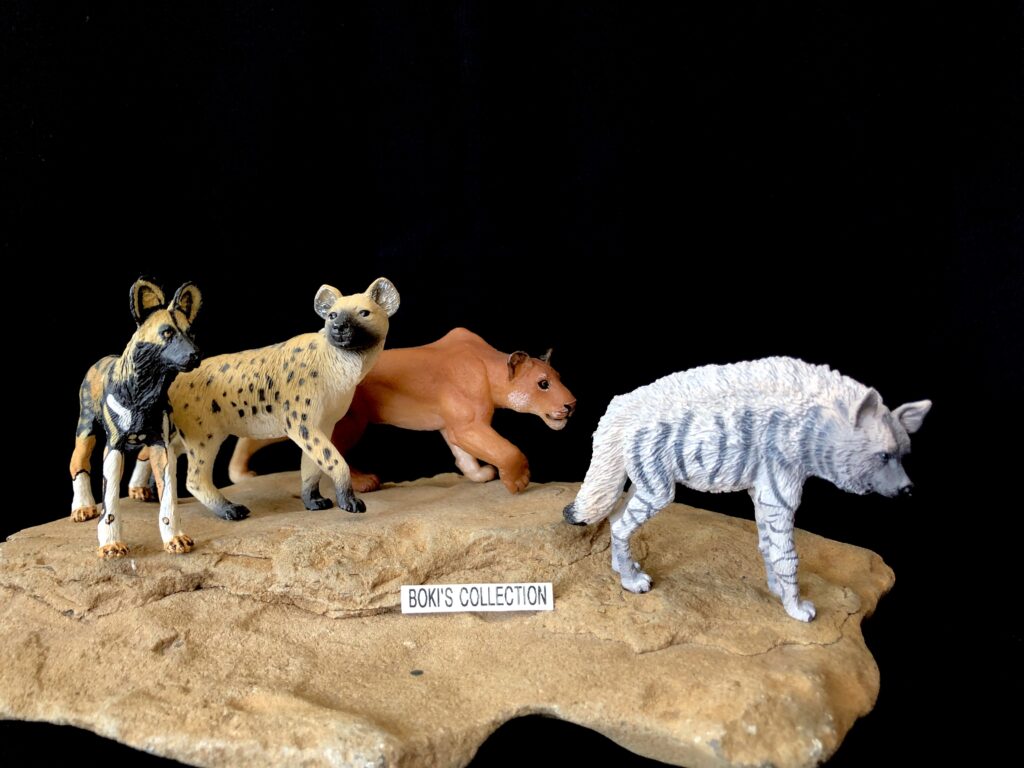
In some areas, there are rare occasion where it even evolved a unique relationship with the wolf when their range overlaps, with rare instances where it is sometimes seen living amongst the pack. Unlike its larger spotted relative, Striped hyenas are not active hunter of large animals. Instead, they prefer to scavenge. If they do hunt, they go for small prey such as rodents, birds, and lizards, although given the chance, they may take down newborn ungulates.
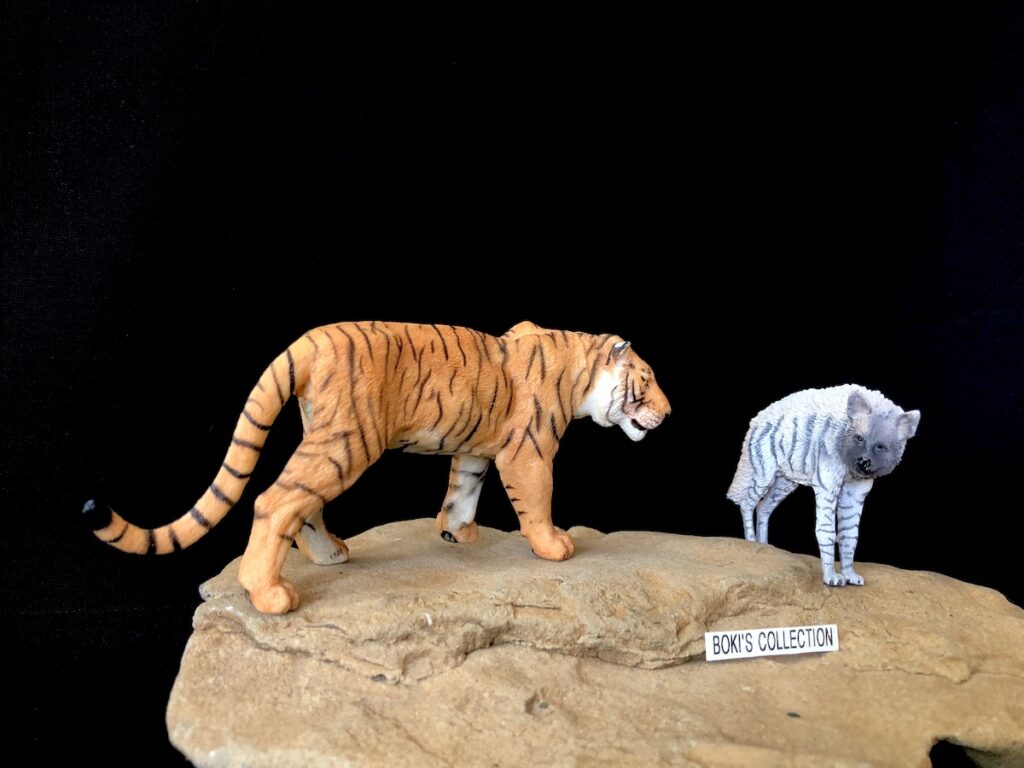
Striped hyenas are one of the smallest of the four extant species, just slightly larger than the Aardwolf and are mostly nocturnal, making them hard to observe in the wild. Both males and female are very similar in appearance with only subtle differences, and unlike the spotted, it does not live in huge group or pack, instead forming just small family group.

Striped hyenas are known to have a habit of feigning death when they are attacked by much larger predators. There are rare reports of them attacking humans mostly in self-defense.
Although obscure, the striped hyena actually has a few representations in the toy figure world, more than I thought, although most are small size. It made its first appearance in the Starlux brand (the CollectA of its time), and there is also one from Play Visions and Chap Mei.
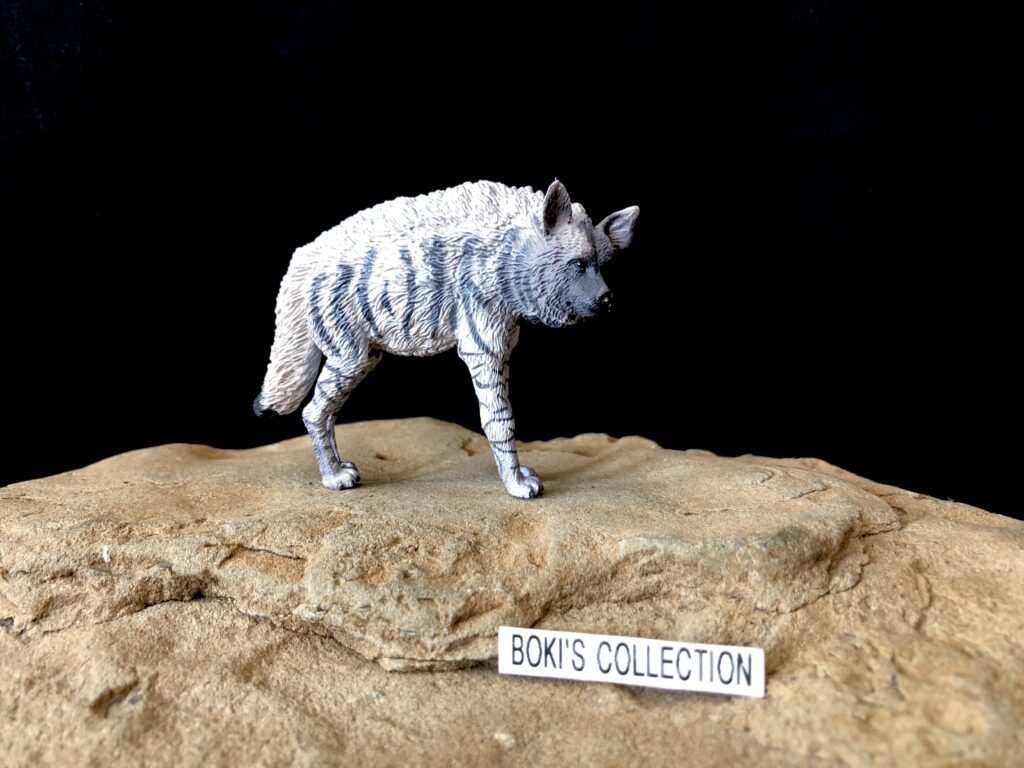
This is by far the best figure there is of this unique species and I highly recommend it not just because of the rarity of the species in toy form, but it really is a beautiful sculpted and accurate model.

Due to its wide geographical range, it makes a great figure to display with other animals that are not African; making one truly unique alternate display to your usual African savanna theme.
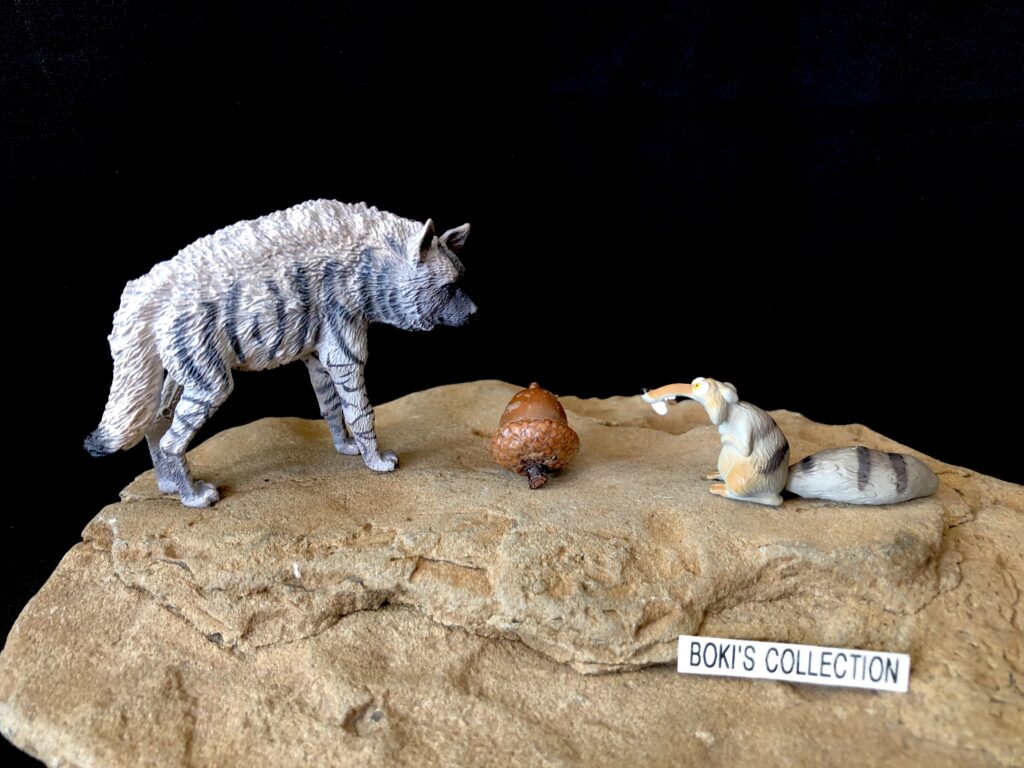
Well, hope you all enjoyed reading the review of this beautiful figure. Until the next one, stay safe and healthy. Cheers!
Disclaimer: links to Ebay and Amazon on the AnimalToyBlog are affiliate links, so we make a small commission if you use them. Thanks for supporting us!




Wonderful, thorough review of a great model I also possess 🙂
that is so beautiful ! is there any way I can ger this model ! !
“…just slightly larger than the Aardwolf,…”
You mean on average ~1.5x the length and shoulder height as well as ~2-3x the weight.